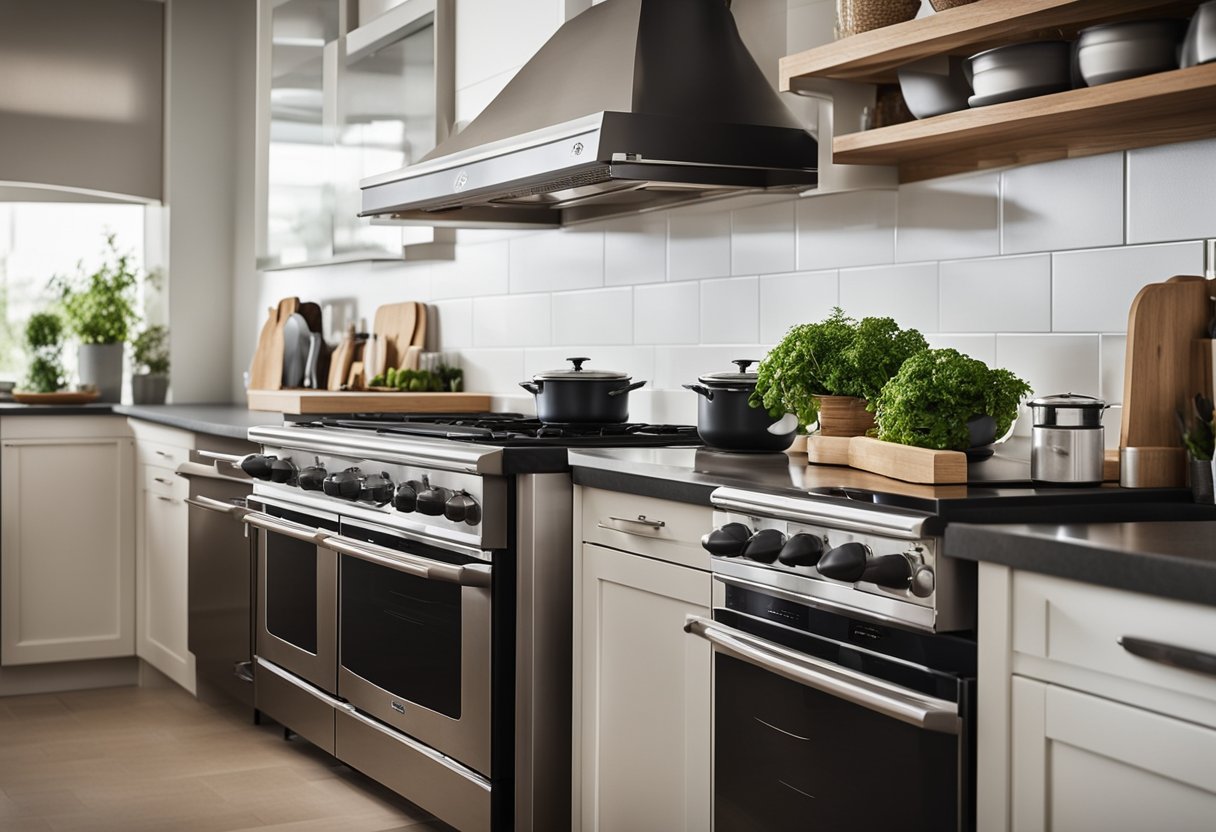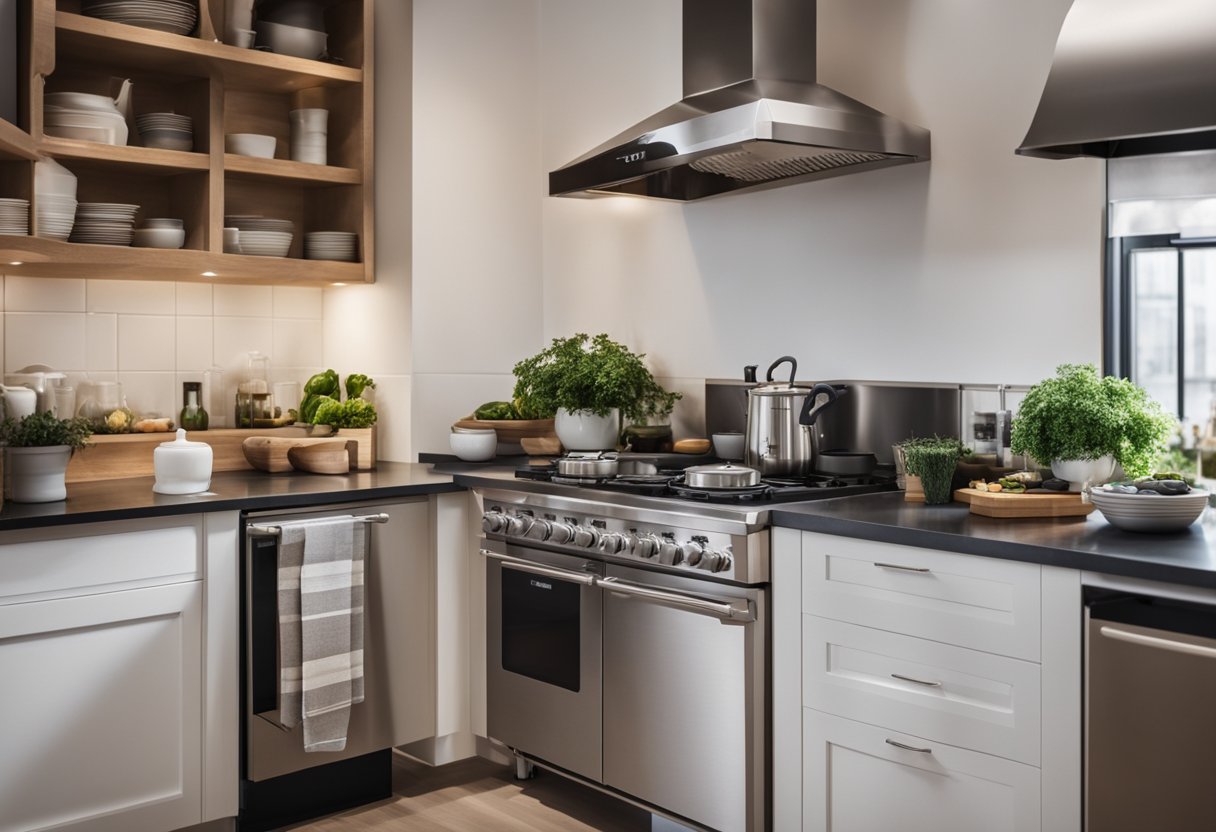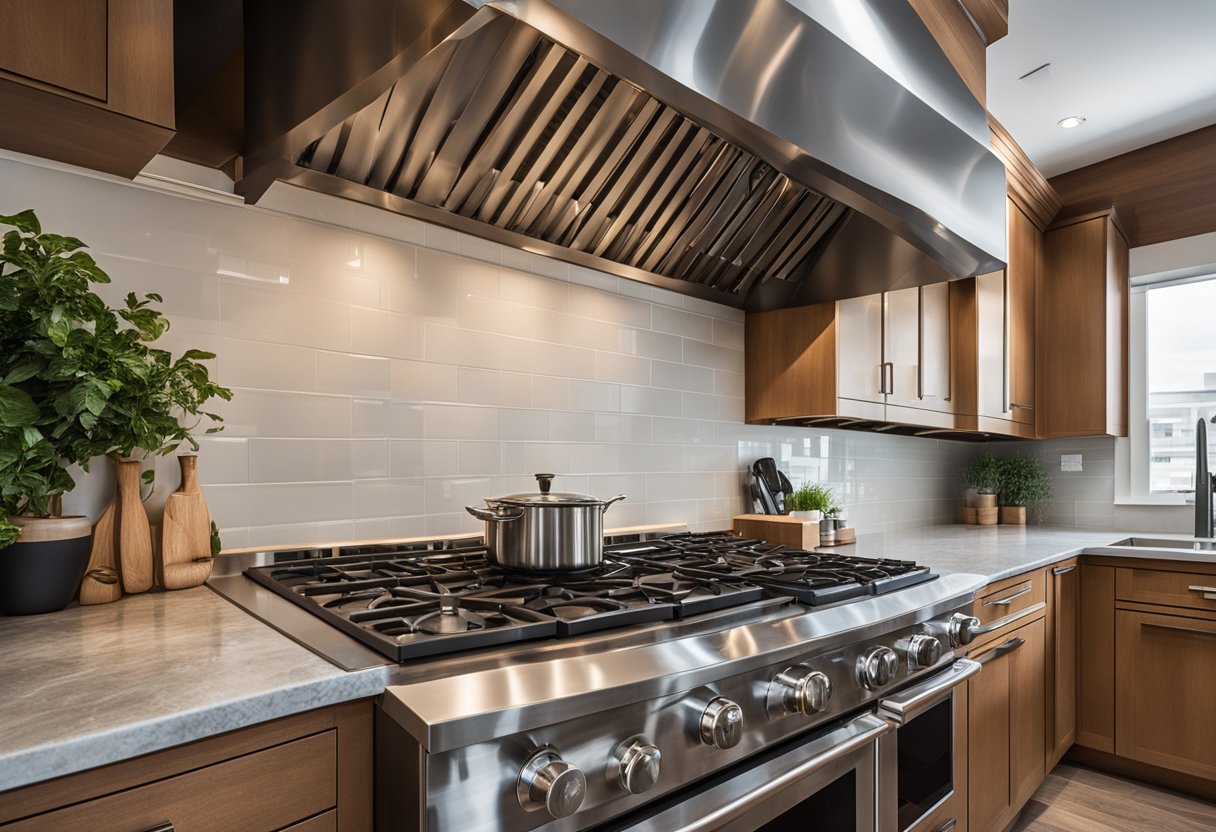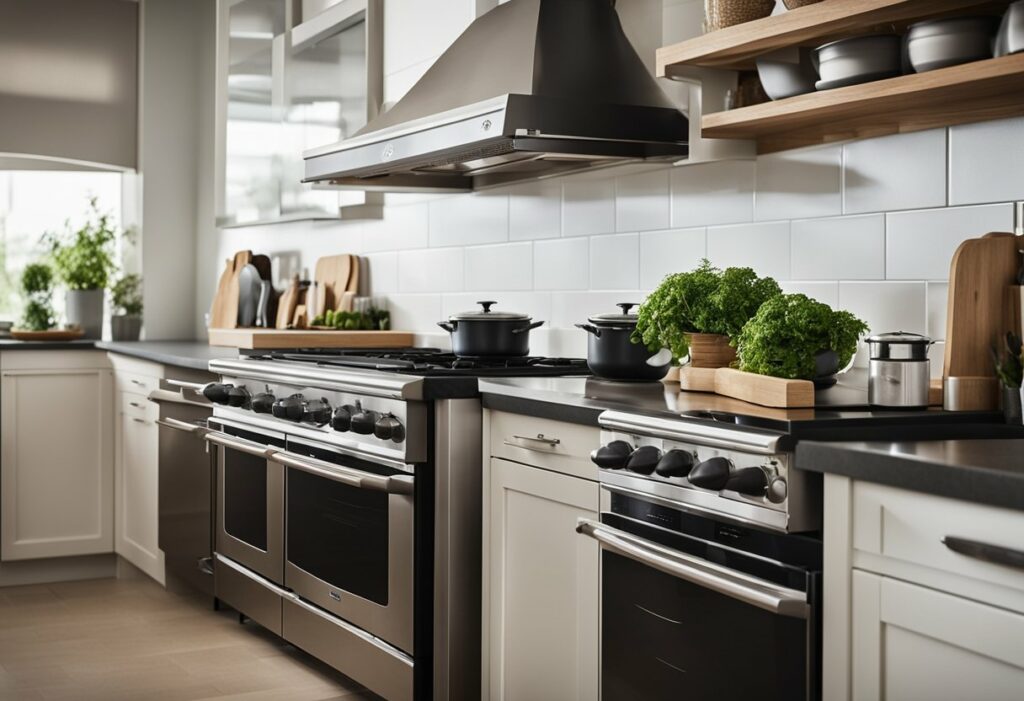Revamp Your Heavy Cooking Experience with These Kitchen Design Tips
Are you someone who loves to cook? Do you find yourself spending a lot of time in the kitchen preparing meals for your family and friends? If so, you know that having a functional kitchen is essential. A well-designed kitchen can make all the difference when it comes to cooking efficiently and effectively. In this article, we will explore kitchen design for heavy cooking and provide you with tips and tricks for creating a kitchen that can handle all your culinary needs.

Designing the heart of your home, your kitchen, can be an exciting and challenging process. It’s important to consider the practicalities of heavy cooking when designing your kitchen. From the layout to the appliances, every aspect of your kitchen should be carefully thought out to ensure that it is functional and efficient. Whether you’re renovating your existing kitchen or building a new one, there are a few key things to keep in mind when designing a kitchen for heavy-duty cooking.
Key Takeaways
- A well-designed kitchen is essential for heavy cooking.
- The layout and appliances should be carefully thought out to ensure efficiency.
- Consider practicalities such as ventilation, storage, and lighting when designing a kitchen for heavy-duty cooking.
Designing the Heart of Your Home

Your kitchen is the heart of your home, and designing it to suit your needs can make heavy cooking a breeze. When it comes to kitchen design, there are several factors to consider. In this section, we will explore the key elements to consider when designing a kitchen for heavy cooking.
Choosing the Right Layout
The layout of your kitchen is one of the most important factors to consider when designing a kitchen for heavy cooking. There are several popular kitchen layouts to choose from, including U-shaped, L-shaped, galley, and single wall kitchens. Each layout has its own advantages and disadvantages, so it’s important to choose the one that best suits your needs.
Selecting Durable Materials
When designing a kitchen for heavy cooking, it’s important to select durable materials that can withstand the wear and tear of daily use. Some popular materials for kitchen countertops include marble, glass, wood, and metal. White marble is a popular choice for its timeless beauty, while glass and metal offer a sleek, modern look. When it comes to cabinets, consider a mix of open shelves and closed storage to maximise your kitchen storage space.
Incorporating Efficient Storage Solutions
Efficient storage solutions are essential when designing a kitchen for heavy cooking. Consider incorporating pull-out drawers, corner cabinets, and deep drawers for pots and pans. Open shelves are also a great option for storing frequently used items. When it comes to kitchen storage, the key is to maximise your space while keeping everything within reach.
Optimising Lighting and Ventilation
Good lighting and ventilation are essential when designing a kitchen for heavy cooking. Natural light is ideal, so consider adding windows or skylights if possible. Pendant lights are a great option for task lighting, while under-cabinet lighting can add a warm glow to your kitchen. Proper ventilation is also important, so consider adding a range hood or exhaust fan to keep your kitchen smelling fresh.
Adding Personal Touches with Decor
Finally, don’t forget to add your personal touch to your kitchen with decor. A backsplash is a great way to add colour and pattern to your kitchen, and glass panels can add a modern touch. Consider a colour scheme and texture that complements your kitchen’s design, and add personal touches like artwork or plants to make your kitchen feel like home.
In conclusion, designing a kitchen for heavy cooking requires careful consideration of layout, materials, storage solutions, lighting, and decor. By taking these factors into account, you can create a kitchen that is both functional and beautiful.
The Practicalities of Heavy Cooking

If you love cooking and spend a lot of time in the kitchen, you know that a functional and well-designed kitchen is essential. A kitchen designed for heavy cooking should be both practical and comfortable. Here are some tips to help you create a kitchen that is perfect for your needs.
Selecting Appliances for Intensive Use
When selecting kitchen appliances for heavy-duty cooking, it’s important to choose appliances that are designed for intensive use. Look for appliances that are durable and can withstand high temperatures. A stove with a powerful burner and a cooker hood that can effectively remove smoke and odours are essential. A microwave oven and an air fryer can also be useful appliances to have in your kitchen.
Creating an Easy-to-Clean Environment
When cooking, grease and grime can accumulate quickly. To make cleaning easier, choose materials that are easy to clean and maintain. A backsplash made of tiles or stainless steel can be a great option. Countertops made of granite or quartz are also easy to clean and can withstand heat and stains. An uncluttered kitchen with plenty of storage space can also help keep your kitchen clean and organised.
Ensuring Comfort and Functionality
A kitchen designed for heavy cooking should be both comfortable and functional. Consider adding a kitchen island to provide extra workspace and storage. You can also add a bar or a dining area with stools or chairs to create a comfortable dining space. Make sure your kitchen is well-lit and properly ventilated to ensure a comfortable cooking environment.
By following these tips, you can create a kitchen that is both functional and comfortable for heavy cooking. Whether you’re cooking for your family or hosting a dinner party, a well-designed kitchen can make all the difference.
Frequently Asked Questions

How can you maximise space in a small kitchen for frequent, heavy cooking sessions?
When it comes to designing a small kitchen for heavy cooking, every inch counts. One way to maximise space is to use vertical storage solutions such as wall-mounted cabinets and shelves. You can also consider installing pull-out drawers and cabinets to make the most of your available space.
What are the top features to include in a kitchen design that will see a lot of cooking?
For a kitchen that will see a lot of cooking, it’s important to prioritise functionality over aesthetics. Some of the top features to include are a large countertop for food preparation, a deep sink for washing dishes and pots, and a powerful range hood to ventilate the cooking area. You may also want to consider installing a double oven, which will allow you to cook multiple dishes simultaneously.
Could you suggest the optimal kitchen layout for managing both wet and dry cooking processes?
The optimal kitchen layout for managing both wet and dry cooking processes is the L-shaped kitchen. This layout provides ample counter space for food preparation and cooking, as well as separate areas for wet and dry cooking processes. You can place the sink and dishwasher on one side of the kitchen, and the stove and oven on the other side.
What are the benefits of having a kitchen island when you’re doing a lot of cooking?
A kitchen island can be a great addition to a kitchen that’s used heavily for cooking. It provides additional counter space for food preparation, as well as storage space for pots, pans, and other cooking equipment. You can also install a sink or cooktop on the island, which will allow you to cook and clean up without having to move around the kitchen.
How do you effectively partition a wet and dry kitchen in a home?
To effectively partition a wet and dry kitchen in a home, you can use a combination of design elements such as glass doors, sliding doors, and partitions. Glass doors and partitions can help to separate the wet and dry areas of the kitchen while still allowing light to flow through. Sliding doors can be used to close off the wet area when necessary.
What are the essential design considerations for a long kitchen that’s used heavily for cooking?
When designing a long kitchen that’s used heavily for cooking, it’s important to consider the flow of traffic and the placement of appliances. You should aim to create a work triangle between the sink, stove, and refrigerator, which will allow you to move around the kitchen efficiently. You should also consider installing a large island or peninsula to break up the space and provide additional counter space for food preparation.



